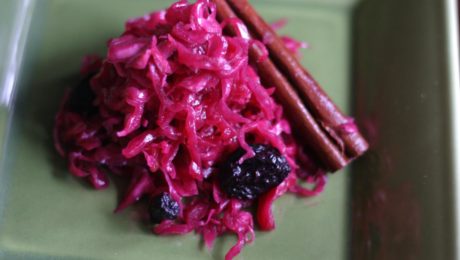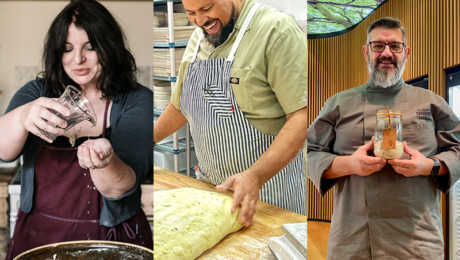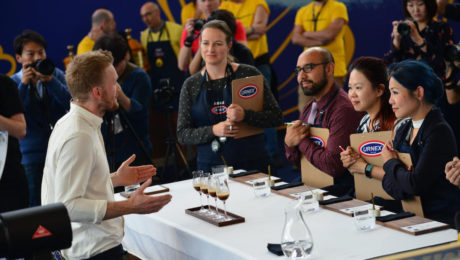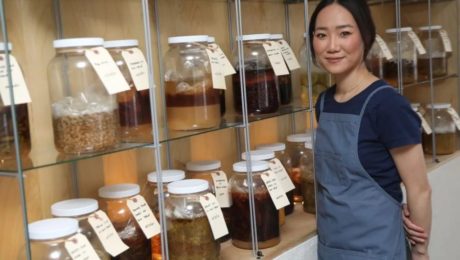Fermentation Takes Center Stage in the Coffee Industry
Coffee production is an enormous, global industry, but the fermentation of coffee beans has not been a major focus for producers — until now. Highlighting the scope of the industry and this new emphasis on the impact of fermentation, The Fermentation Association’s webinar El Estado Del Arte En La Fermentación Del Café generated registrations from around the world. Registrations were nearly twice what TFA’s largest webinar generated.
TFA’s first Spanish-language webinar, the final count of registrants was well over 1,000, and came from 42 countries. The continents of North and South America, Europe, Africa, Asia and Australia were all represented. Registrations from key coffee-growing areas — Colombia, Mexico, Peru and Honduras — accounted for 70% of those that signed up. But we had folks from Ethiopia, Belgium, Nepal, Laos and the United Arab Emirates as well!
TFA partnered with the Specialty Coffee Association (SCA) last year and produced a webinar in August entitled The State of the Art in Coffee Fermentation. SCA’s Technical Officer, Dr. Mario Fernandez, brought together two esteemed speakers in the industry that discussed different approaches to fermentation. Felipe Ospina, CEO of Colors of Nature Group, and Ruben Sorto, CEO of BioFortune Group, represented two sides of the subject. At the risk of oversimplifying, Ospina favors traditional, natural fermentation methods. Sorto is investing in how to apply the technologies and processes from other food and beverage production industries — like winemaking, for example — to enhance the end product. Ospina connected from offices in Japan; Sorto spoke from his Honduras operations.
These speakers also were part of last year’s English-language webinar on the same subject and with the same speakers. The response to that session was so overwhelmingly positive that it led us to reprise the session, but to do it this time in Spanish. It was a bit challenging for our non-Spanish-speaking TFA team, but we were helped out enormously by our colleague from Monterrey, Mexico, Raquel Guajardo, a fermentation author, educator and entrepreneur. Dr. Fernandez, after being instrumental in planning and promoting both sessions, was called away suddenly on the day of this webinar. Ms Guajardo filled in admirably as our last-minute replacement moderator.
We look forward to more collaborations with SCA. Watch for another joint effort in late April/early May, after SCA’s Specialty Coffee Expo in Boston, April 8-10.
- Published in Business, Food & Flavor
Jewish Delis GoVegan
Jewish delis are evolving for modern consumers, offering plant-based alternatives to lox and pastrami.
“We’re literally saving the Jewish deli. We’re giving it the modern twist that’s desperately needed to stay delicious and relevant to a growing segment of the population,” said Jenny Goldfarb, the founder and CEO of Unreal Deli. Goldfarb’s plant-based corned-beef-pastrami hybrid attracted an investment deal on SharkTank, and today it’s available in 2,200 grocery stores.
Though Jewish cuisine is known for being heavy on meat, vegetarian food has a part in Ashkenazi culture, notes Jeremy Umansky, chef at Larder Deli in Cleveland. He points out that kashruth (kosher dietary laws) and periods of poverty meant Jewish cuisine always included vegetarian recipes.
The food at Larder — which includes vegan and vegetarian dishes — is put through the same process as animal-based items. Umansky cures mushrooms with salt and koji for a smoky, savory flavor and meat-like texture.
“It’s all about the method and technique behind the production of those foods,” Umansky said. “You know, going back and looking at things and seeing that there is historical precedent for this.” Pictured, a selection of vegan Jewish deli fare at Ben & Esther’s in Portland, Oregon.
Read more (Insider)
- Published in Business, Food & Flavor
Noma’s First Consumer Product Sells Out
Noma launched their direct-to-consumer food products line in February with a smoked mushroom garum. Their vegan spin on a traditional fermented fish sauce is the first release from Noma Projects, the famed restaurant’s product line for home cooks. That garum, retailing for $24 per 250cl bottle, sold out in a day.
“At Noma they’ve turned to koji and mushrooms instead of fermented fish to create their umami-rich smoked mushroom garum. It’s not as intensely salty as some other garum-adjacent products, and the aroma and flavor reveal subtle smoke and mushrooms,” writes Florence Fabricant of The New York Times.
Noma Projects — which launched last year — will include more pantry projects and community-based initiatives in the future, said René Redzepi, chef and co-owner of the Copenhagen-based restaurant. He hopes Noma Projects will him make more money. Noma has hovered around a slim 3% profit margin ever since opening 18 years ago.
Read more (The New York Times)
- Published in Business, Food & Flavor
Expo West Returns
In March 2020, Natural Products Expo West became one of the first casualties in the U.S. events world, shut down by the outbreak of Covid-19 even as booths were being set up in Anaheim. Now, two years later, Expo West returns to Orange County with natural food exhibitors from around the world. TFA staff and advisory board members will also be in attendance.
In 2019, the enormous spring trade show attracted around 88,000 registrations; this year, that number is estimated at 55,000-60,000. Show producer New Hope Network (part of London-based Informa PLC) is also including a virtual option for attendees still unable or unwilling to travel.
The trends at this year’s event are being driven by Millennial and Gen Z consumers. New Hope put a spotlight on six top themes in a recent webinar:
No. 1: Functional Ingredients. “Health and wellness products make up a quarter of the volume of the industry but represent two-thirds of all growth,” said SPINS Data Analyst Scott Dicker. “We’re seeing consumers pushing for individual pursuit of wellness across channels.”
No. 2: Organic & Regenerative. Food that focuses on performance nutrition, food made with ashwagandha or food with paleo ingredients are driving growth for organic and regenerative products. Sodas and carbonated beverages are also helping organic products grow, “one of the last ‘junk food’ categories penetrated by natural and organic,” Dicker said. Gut health sodas, especially.
No. 3: Climate and Sustainability. Media headlines are declaring carbon as the new calorie. Consumer surveys speak to that — 70% will pay more for “premium, sustainable, climate-friendly products” and 80% want brands to educate them on their roles in climate issues. Companies are changing ingredient sources and product packaging to be more environmentally-friendly.
No. 4: Diversity. “Over the past couple years, we’ve seen tremendous growth in women, minority, NGLCC (National LGBT Chamber of Commerce) certified and veteran-owned businesses and you’re going to see it all over the show floor,” Dicker said.
No. 5: Plant-Based Innovation. Plant-based eating has skyrocketed over the last five years. “But plant-based alone isn’t enough anymore. What are plant-based brands doing to keep up with innovation?” Dicker said.
No. 6: Sustainable Meat & Dairy. Though the sustainable meat and dairy category is down 2.1%, pockets of it are growing, specifically grass-fed, fair trade and animal welfare and sustainability claims. Innovations are coming from small and local farms.
Read more (New Hope Network)
- Published in Business, Food & Flavor
KojiCon Highlights
Over 1,100 koji experts and enthusiasts from 63 different countries and 49 states gathered virtually for this year’s KojiCon. Koji, the mold-based ferment prevalent in East Asia and used to make soy sauce, sake and miso, is becoming more common in restaurants and in home cooking around the world.
The second annual KojiCon wrapped-up March 6. It was created by the Yellow Farmhouse Education Center, a nonprofit organization based at Stone Acres Farm in Stonington, Connecticut. The center focuses on food and farm education through educational opportunities. Rich Shih, co-author of Koji Alchemy, who helps organize the event, joined speakers like Sandor Katz, Misti Norris, Takashi Sato, Hiroko Shimbo, Kirsten Shockey, Jeremy Umansky and David Zilber and Mara King speaking on the theme of “Changing Food for Good.”
“It opens our eyes to possibilities beyond koji, within the Asian approach towards fermentation, primarily mold-based,” Shih said of the conference. “We want you to discover that, through fermentation, maybe just adding a little bit of salt or drying it or you know of course adding these mold-based ferments that we’re talking about, you can create amazing flavors.”
Pictured are Jen Rothman and Eric Dawson of Yellow Farmhouse, Shih, Irene Yoo of Yoo Eating, King and Umansky.
Though the conference is over, tickets to watch the recordings are still available at: https://kojicon.org/
- Published in Food & Flavor
“Bacterial Bully” Could Create Healthier & Tastier Fermented Foods
Microbiologists have long considered that there are two distinct categories of energy conservation in microorganisms: fermentation and respiration. Lactic acid bacteria (LAB) use fermentation, making it central to food and drink production and preservation since the dawn of man.
But researchers at the University of California, Davis, and Rice University discovered a LAB species that uses a hybrid metabolism, combining both fermentation and respiration.
“These are two very different things, to the extent that we classify bacteria as basically one or the other,” said Caroline Ajo-Franklin, a bioscientist at Rice University and co-author of the study. “There are examples of bacteria that can do both, but that’s like saying I can ride a bicycle or I can drive a car. You never do both at the same time.”
“What we discovered is a LAB that blends the two, like an organism that’s not warm- or cold-blooded but has features of both,” she said. “That’s the big surprise, because we didn’t know it was possible for an organism to blend these two distinct metabolisms.”
The species — lactiplantibacillus plantarum — is what scientists call a bacterial bully because it takes advantage of two distinct metabolic processes, according to a press release from Rice on the study. These systems were “not previously known to coexist to acquire the fuel they burn for energy.”
“Using this blended metabolism, lactic acid bacteria like L. plantarum grow better and do a faster job acidifying its environment,” said Maria Marco, a professor in the food science and technology department at UC Davis and the study’s co-author [and a TFA Science Advisor].
The discovery is significant for food and chemical production. New technologies that use LAB could now produce healthier and tastier ferments, minimize food waste and change the flavors and textures of fermented food.
“We may also find that this blended metabolism has benefits in other habitats, such as the digestive tract,” Marco said. “The ability to manipulate it could improve gut health.”
The study began with a puzzle: the realization that genes responsible for the electron transfer pathway in mainly respiratory organisms also appear in the LAB genome. “It was like finding the metabolic genes for a snake in a whale,” Ajo-Franklin said. “It didn’t make a lot of sense, and we thought, ‘We’ve got to figure this out.’”
While the Davis lab studied the genome, the team at Rice carried out fermentation experiments on kale.
“It wasn’t our first choice,” said Rice alumna and co-lead author Sara Tejedor-Sanz (now a senior scientific engineer in the Advanced Biofuels and Bioproducts Process Development Unit at Lawrence Berkeley National Lab).
“We performed some initial experiments with cabbage, since that’s a known fermented food — sauerkraut and kimchi — in which lactic acid bacteria are present,” she said. “But there were technical difficulties and it didn’t turn out so well. So we looked for another food to ferment where LAB could be found in its ecological niches.
“Kale has compounds like vitamins and quinones that lactic acid bacteria use as cofactors in their metabolism, and are also involved in interacting with the electrodes,” she said. “We also found fermenting kale to make juice was a trend. It sounded perfect for our biochemical reactors.”
The study showed LAB enhances metabolism through a FLavin-based Extracellular Electron Transfer (FLEET) pathway that expresses two genes (ndh-2 and pp1A) associated with iron reduction, a step in the process of stripping and incorporating electrons into ATP (adenosine triphosphate (ATP), energy-carrying molecule).
Because LAB’s genome has evolved to be small, thus requiring less energy to maintain, the wide conservation of FLEET must serve a purpose, Ajo-Franklin said.
“Our hypothesis is this helps bacteria get established in new environments,” she said. “It’s a way to kick-start their metabolisms and outcompete their neighbors by changing the environment to be more acidic. It’s being a bully.”
That the FLEET pathway can be triggered with electrodes offers many possibilities, she said. “We found we can use the hybrid metabolism in food fermentation,” Ajo-Franklin said. “Now we have a way to change how food may taste and avoid failed food fermentations by using electronics.”
“We may also find that this blended metabolism has benefits in other habitats, such as the digestive tract,” Marco said. “The ability to manipulate it could improve gut health.”
Ajo-Franklin noted LAB are commonly found in the microbiomes of many organisms, including humans. “You can already buy it in health food stores as a probiotic,” she said. “The human gut is an anaerobic environment, so LAB have to keep a redox balance. If it oxidizes carbon to gain energy, it has to figure out a way to reduce carbon somewhere else.
“Now we think if we provide another electron donor or acceptor, we could promote the growth of positive bacteria over negative bacteria.”
UC Davis graduate student Eric Stevens is co-lead author of the study. Co-authors are Rice graduate student Siliang Li; at UC Davis, graduate students Peter Finnegan and James Nelson, and Andre Knoesen, a professor of electrical and computer engineering, at UC Davis; and Samuel Light, the Neubauer Family Assistant Professor of Microbiology at the University of Chicago.
Ajo-Franklin is a professor of biosciences and a CPRIT Scholar. Marco is a professor of food science and technology.
The National Science Foundation, Office of Naval Research, the Department of Energy Office of Basic Energy Sciences and a Rodgers University fellowship supported the research.
The study results were published in the journal eLife.
- Published in Food & Flavor, Health, Science
Bubbling Over: Pandemic Sourdough
Homebound during the Covid-19 outbreak, budding home bakers around the globe made sourdough baking their new hobby. Hailed as the “breakout star of pandemic-era kitchens” by The New York Times, sourdough became a national fascination as more people experimented with the microbe-enabled, tangy bread.
We asked three experts to share their thoughts on the sourdough craze — educator Vanessa Kimbell (of The Sourdough School), bakery owner Azikiwee Anderson (Rize Up Bakery) and Karl De Smedt, curator of the world’s only sourdough starter library.
The question: How did the pandemic change the market for professionally-baked sourdough? Are more people making their own or are they buying from professional bakers?
Vanessa Kimbell, founder The Sourdough School
The pandemic changed the market in several ways. The first thing is, some of the large manufacturers that I’ve been talking to have been starting to appreciate and understand that people want real sourdough. And by that I mean sourdough that is genuinely long, slow fermented with wild yeast and lactic acid bacteria. They’ve also begun to appreciate the connection between bread and health. Authenticity and integrity are the two words that come to my mind when I think about how the pandemic has impacted the professional sourdough market.
There’s no question that there was an exponential increase in home bakers making sourdough during the pandemic. It’s rather beautiful. I think when we were gifted the time to make those connections, so many of us used that. Will there be sudden change in behavior? People have now gone back to work and now I’d say there’s almost been a backlash against people wanting to take up sourdough. It became almost too trendy to the point where there can be a backlash. I have noticed there was a significant drop off as life has returned to normal. But that’s only to be expected. The joy of discovering we have a little freedom as a home baker making their own bread, I’d say it’s leveling back out again to pre-pandemic numbers.
Azikiwee Anderson, founder Rize Up Bakery
I started baking like most of the world did during the pandemic. Normally we would all just go to the store and pick up whatever mediocre bread they had on hand, never thinking twice [that] it was full of preservatives and made with cheap industrial flour. Then all of sudden we had the thing that is always in short supply “TIME”! So we all tried to connect to the nostalgia of being self-sufficient since we had no real control over most things.
The sheer amount of people connecting to their food and what it is made of is what made it amazing for small new found bakers like me! The uptick in sourdough baking taught millions of people how hard it is and how good it could be. What more is there to say!
Karl De Smedt, curator The Sourdough Library, senior communication and training manager Puratos Center for Bread Flavour
Many consumers today are excited about sourdough bread. During the pandemic, many have started baking it at home and, on social media, sourdough reached a massive peak as a sign of consumer engagement. No wonder because it truly has a unique, rich taste. According to research by Puratos, 52% of today’s consumers know sourdough . Approximately 45% of consumers associate sourdough with “better taste” and nearly 30% associate sourdough with “Rustic,” “Healthier,” and “More Natural” – opening an excellent opportunity for value creation.
For professionally-baked sourdough, there are immense opportunities. The most considerable evolution we see is that it will not matter who makes the bread in the future, but how it’s made — going from fast processes in two to three hours with only baker’s yeast. Or long processes with sourdough from 12 to 48 hours. A project like the Puratos sourdough library aims to discover more about the use of sourdough in all its aspects. We are sharing knowledge, preserving, and protecting the biodiversity of sourdough and bringing back the tradition used by more than 250 generations of bakers who used sourdough as their most precious ingredient in bread baking. That’s why, at Puratos, we believe the future of bread lies in its past.
- Published in Business, Food & Flavor, Health
Is Fermentation “So White”…or Not?
More international fermented foods and beverages are entering the American food scene, an exciting development in an expanding market. But the origins of many of these traditional dishes get blurred by western producers.
In a panel on diversity and cultural appropriation during TFA’s conference FERMENTATION 2021, BIPOC food professionals encouraged fermenters to innovate with food from different countries, but to be mindful of their approach. A dish’s culture must be respected, its history acknowledged and negative stereotypes eliminated. The talk “Is Fermentation ‘So White’…or Not?” included panelists Miin Chan (educator and writer working on her PhD), Jiayang Fan (staff writer for The New Yorker), Mara Jane King (director of fermentation for IE Hospitality), Kheedim Oh (founder of Mama O’s Premium Kimchi, and TFA Advisory Board member) and Sebastian Vargo (founder of Vargo Brother Ferments).
Last year, two articles helped propel a conversation on diversity among fermenters. One was Fan’s New Yorker article “The Gatekeepers Who Get to Decide What Food is Disgusting,” which highlights how a western view of “disgusting” food requires immigrants to assimilate to local food cultures. Another was Chan’s Eater article “Lost in the Brine,” which explores cultural appropriation in fermentation.
Oh expressed his frustration watching companies produce kimchi without any cultural ties to or acknowledgement of its Korean history. Vargo agreed.
“Whether it is financial or just overall exposure, you really can’t deny the fact that oftentimes…a white face or a white person borrowing off the culture will oftentimes achieve higher amounts of success,” Vargo says. Kimchi has exploded in popularity in the U.S. the past few years – and some white producers receive more funding than traditional Korean companies. “They’re overshadowing the people that actually deserve to have their stories told in the first place.”
Traditional ferments can get watered down, tailored to follow food trends instead of staying true to their historical roots. Chan pointed out that, in Australia, there’s no regulation around labeling certain foods. Pickled cucumbers could be labeled as kimchi, appealing to western consumer tastes.
“Whether it’s in fermentation or the food industry or just any industry that we exist in within this capitalist system, there’s systemic racism and there’s some historical forces that mean that BIPOC basically often have less access to social and financial capital,” she adds.
Cookbook author Alison Roman came under fire when she released a curry recipe she labeled as a stew. There was no history detailing curry’s Southeastern Asian roots and no context of where the recipe idea originated.
“She literally whitewashed all of the culture out of it and made it into something that she could sell,” King said. “Labeling something to suit you and to suit your benefit and your profit can be harmful to people of color.”
It’s a problem in restaurant reviews too, Fan pointed out. Food critics tend to draw a western comparison to more exotic cuisines, comparing an Asian rice dish to a pasta, for example, offering their own translation. She recently wrote a review on a hot pot restaurant in New York and felt compelled to compare it to fondue. She had a limited word count and wanted to be succinct. But a coworker asked: Why not just explain what it is?
“In the process of being a writer, a critic, (I need) to introduce those words in the cultural lexicon so that the western standard isnt kind of the defacto comparison for everything,” she said.
Who decides French cuisine is more elevated than Chinese, Oh questions.
“I think that’s the huge problem is that there’s so much inherent cultural bias that even we as minorities too will have within ourselves that keeps getting perpetuated,” Oh says, noting people of color are not pigeonholed to only cooking their traditional food, too.
Society needs to value traditional cooking arts so food history and knowledge – especially from more rural parts of the world – isn’t lost, Chan adds.
“I think we’ve come around now, the work that (the panelists) and many other fermenters do shows we want to be connected to our traditional food system, we don’t want to lose these tastes and we want to understand our microbial heritages,” she says.
- Published in Business, Food & Flavor
Changing Face of Specialty Coffee
Gesha (or Geisha) coffee has been the favored variety in coffee competitions for over 15 years. But recently specialty coffee brewers are using a new variety: the species C. eugenioides. An article in Perfect Daily Grind details the shift.
As Gesha became the preferred choice of coffee champions (seven of the World Brewers Cup (WBrC) champions from 2011 to 2019 used Gesha), the price started to rise. Gesha production, common in Panama, began to increase in other countries wanting to farm the popular variety, notably Colombia and Ethiopia. But increased production led to some lower-quality Geshas coming to market.
In recent years, producers have opted for lesser-known coffees, notably eugenioides, a species of arabica originating in East Africa. Its flavor profile is unique, with notes of tropical fruit, and has lower levels of caffeine. But it can be a risky variety. Eugenioides trees are small and produce small cherries, and they take years to grow.
A possibly more sustainable option for the industry: innovative processing techniques. The 2015 WBrC winner won using carbonic maceration process, a fermentation technique used in the wine industry.
“Fermentation is an effective way to influence the aroma and taste of coffee. It changes the acidity levels and body of coffee,” explains Chad Wang, founder of VWI by Chad Wang, a specialty coffee judge and the 2017 WBrC winner. “Fermentation can significantly help coffee farms to offer different tastes without having to change too much.”
[To learn more about fermentation in coffee, check out TFA’s webinar with the Specialty Coffee Association “The State of the Art in Coffee Fermentation.” The two organizations will be partnering again for a Spanish language version of the free webinar on March 3.]Read more (Perfect Daily Grind)
- Published in Food & Flavor
Canada’s Culinary Trailblazer
Briana Kim is making a name for herself in the Canadian food scene, “putting Ottawa on the map with a focus on fermentation,” writes the Ottawa Citizen. Kim, a self-taught, award-winning chef, runs Alice, a vegan restaurant in Ottawa’s Little Italy neighborhood. Her specialty is fermentation-applied, plant-based cooking. Last fall, she was invited to Eleven Madison Park in New York to share her insight with the chefs as they transitioned to a vegetarian-oriented restaurant.
Continues the article: “It’s definitely a rarefied subject. But in the world’s top-tier kitchens, fermenting food is a red-hot trend, with plant-based cooking not far behind. At Alice, Kim’s imaginative creations such as charcoal-grilled dried maitake mushrooms and sunchokes served with a salsa of tomato and fermented green strawberries, and a sweet pea miso dipping sauce make clear that Alice’s name’s alludes to a surprising culinary wonderland.”
Alice, which opened in 2019, operates with a culinary and scientific focus.
“The innovation and the R&D have to be the No. 1 focus for us,” Kim says. “Fermentation allows us to discover how different food molecules break down and change in texture and flavors, and we are always searching for flavors we haven’t tasted before.”
The waiting room at Alice is filled with jars of Kim’s different ferments, many of which she sells under her Mad Ferments label. She utilizes locally-grown ingredients, planning the menu at Alice months in advance.. For example, she serves cauliflower, spring greens and melons in the middle of winter by fermenting them in the summer.
“Fermentation has existed for such a long time, but I think we are putting our twist on it,” Kim says.
Read more (Ottawa Citizen)
- Published in Food & Flavor









